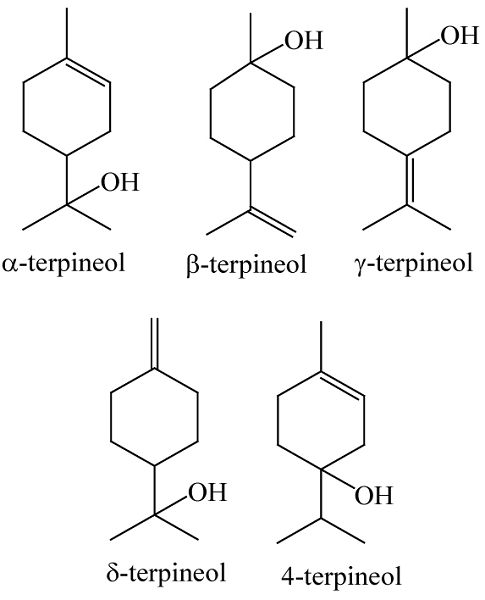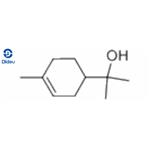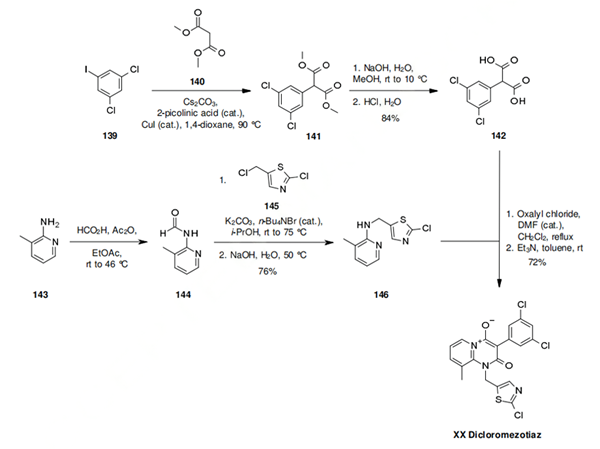What is terpineol used for?
Description
Terpineols are naturally occurring unsaturated monocyclic mono-terpenoid alcohols. They can be found in flowers such as narcissus and freesia, in herbs such as marjoram, oregano, rosemary, and lemon peel oil. Reports on the level of terpenoids in oils occasionally vary considerably, and one wonders how much this is due to the variations in the plants and the variations in the isolation process, as terpineols could also be an artifact. In addition, terpineols are interesting because of their wide range of biological properties [1].

There are five common isomers of terpineols: alpha- (α-T), beta- (β-T), gamma- (γ-T), delta- (δ-T), and terpinen-4-ol (T-4-ol). α- and β-Terpineol occur in optically active forms and as a racemate. Both α-T and T-4-ol are the most important commercial products in many essential oils. On the other hand, β-, γ-, and δ-terpineols do not occur very often in nature. Terpineols, especially the most commonly used compounds as α-T and T-4-on, exert a wide range of biological actions on humans, animals, and plants. They are popular fragrance ingredients used in perfumes, cosmetics, and household cleaning products and used to flavor foods and beverages. They also possess various important biological and medicinal properties.
Uses
α-Terpineol is a tertiary monoterpenoid alcohol with sensory qualities widely used in the flavors and perfumes sector. It can be found in various natural sources, but biochemical hydration with turpentine and α-pinene is the most common method to produce synthetically. Furthermore, the literature has numerous reactions to prepare synthetically through microorganisms by biotransformation of monoterpenes. Apart from its conventional usage, α-terpineol has been studied in domains like medicine and cosmetics since it exhibits biological qualities other than scent, such as antioxidant, antiproliferative, antibacterial, anti-inflammatory, and certain analgesic actions. Moreover, nowadays, it has a central role in many pharmacological applications like diarrhea, analgesia, antimicrobial, and anticholesteremic, as well as as a reliever of neuropathic pain[2].
α-Terpineol 100 μg/disk produced significant inhibition zones in the culture of four drug-resistant Helicobacter pylori cultures[3]. Moderate effects against two strains of Plasmodium falciparum malaria were noted in an EO with a major terpineol component. Higher doses of α-terpineol (50–200 mg/kg ip) in rats subjected to cerebral ischemia improved spatial learning in a water maze vs controls, restored hippocampal long-term potentiation, and lowered malondialdehyde levels indicative of lipid peroxidation.
References
[1] Shalika Rathore, Rakesh Kumar. “Essential Oil Content and Compositional Variability of Lavandula Species Cultivated in the Mid Hill Conditions of the Western Himalaya.” Molecules (2022).
[2] Blowey, D. . "Chapter 4-Lavender essential oil: Nutritional, compositional, and therapeutic insights." (2023):85-101.
[3] Ethan B. Russo.“Chapter Three - Cannabis Pharmacology: The Usual Suspects and a Few Promising Leads.”Advances in Pharmacology (2017):67-134.
You may like
See also
Lastest Price from Terpineol manufacturers

US $0.00-0.00/KG2025-11-27
- CAS:
- 8000-41-7
- Min. Order:
- 1KG
- Purity:
- 98
- Supply Ability:
- 10000KGS

US $1.00/kg2025-04-21
- CAS:
- 8000-41-7
- Min. Order:
- 1kg
- Purity:
- 99%
- Supply Ability:
- 10 mt


